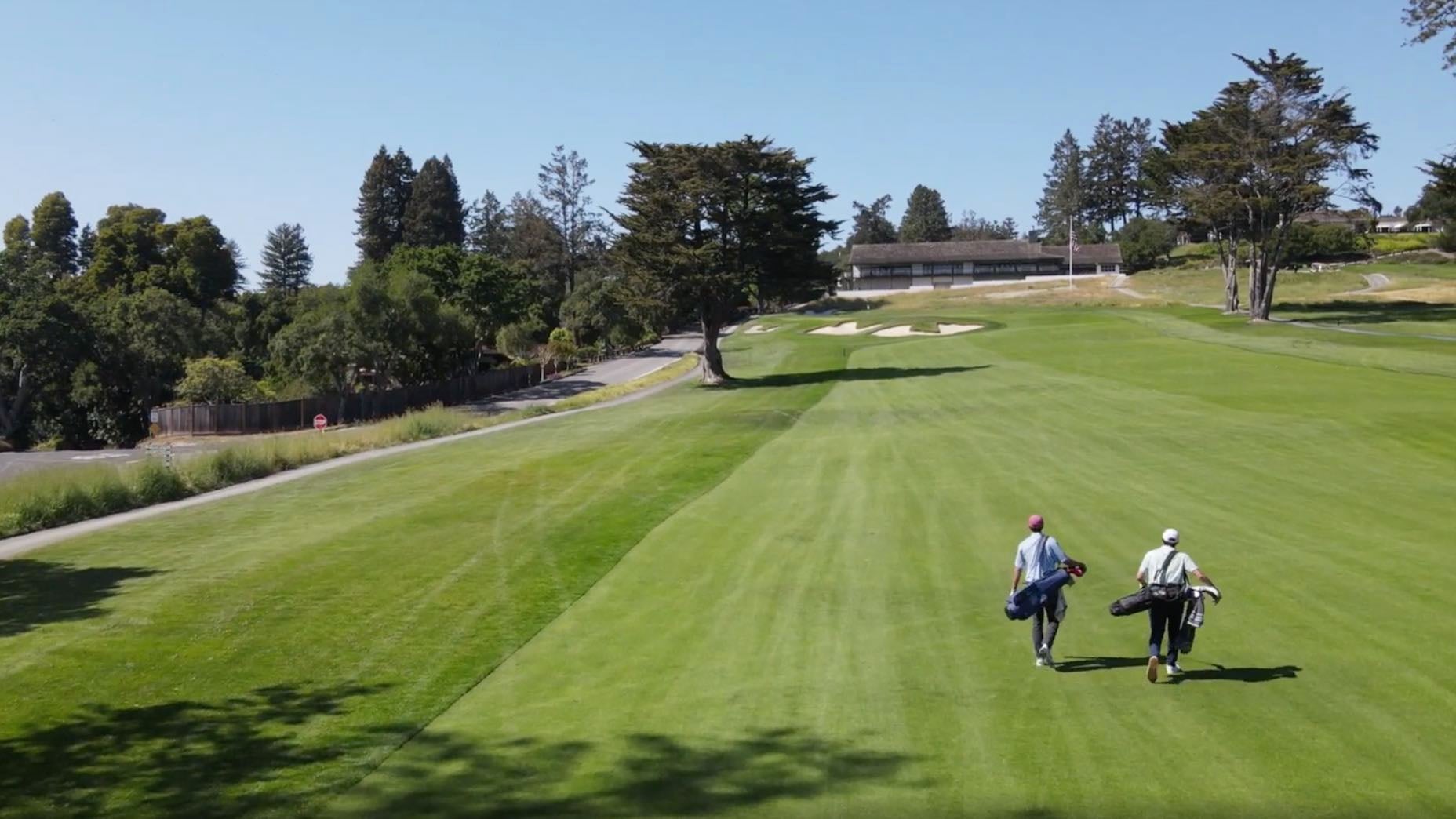As my Alaska Airlines flight touched down at SFO, I imagined what they’d be saying on Golf Channel about the upcoming few days.
“This week is looking like a must-win for Dethier if he wants to cement his legacy among the great players in GOLF Magazine history…”
“Zak just seems to have his number…”
“People are going to start questioning his plus handicap if he can’t back it up on the course…”
This was the third iteration of our Elite Expeditions travel series, where the good folks at Porsche had inspired us to road-trip greatness. But co-conspirator Sean Zak had taken me down (with the benefit of 12 strokes per round, I should add) in both Florida and Georgia. It was time to put up or shut up and defend my honor on the California coast.
Thinking of a golf trip to Streamsong? Here’s your perfect itineraryBy: Dylan Dethier
There was just one detail left to sort out: The format. There are nearly endless options for four-player games, but with just two golfers? We’d wearied of straight-up match play, so we went digging for alternatives to spice up the action. Three rounds, three games, three spectacular golf courses. You can see how they turned out in the video below — and consider incorporating ’em for your own two-player outings, too.
1. Three Little Piggies
The format: This one’s pretty simple, and it’s perfect for the first round of a trip — especially if you’re coming straight off a plane or loosening up after a long road trip. Three Little Piggies is a stroke-play game, but with some extra forgiveness: You get to drop the three highest numbers from your scorecard. Poof! Magic! They’re gone. You’re left with a 15-hole score, and if that’s lower than your opponent’s, well, you win!
The course: Pasatiempo Golf Course, Santa Cruz, Calif. $325.
There was a time when Pasatiempo could fly under the radar. No longer! This Alister Mackenzie gem, which served as inspiration for Augusta National, has been fully rediscovered and appreciated in recent years. The greens fees reflect the quality, but the product you discover on site is decidedly unassuming. Top-notch golf on the West Coast rarely feels old, but Pasatiempo is a product of another time, designed a century ago and still seamlessly integrated into the surrounding neighborhoods.
Pasatiempo is deserving of every accolade. It’s strategic and memorable; even weeks later every shot is seared into my mind, in sequence. And that’s not because I shot a good score; quite the opposite. But I finished Pasatiempo wishing I could play again right then and there. (Word of advice: If you’re putting from above the hole, proceed with caution.)
The result: Sean took down the opening match with a complete mastery of the format. I didn’t make any score worse than 5, but I made a bunch of 5s. Sean, meanwhile, made two 8s and a 7, but dropped those and netted out two shots ahead of me. Three Little Piggies was a resounding success, especially if you’re someone who likes to pick up your ball a couple times per round.
Parting thought: Pasatiempo rules.

2. The Longest Yard
The format: Another simple concept that’s incredibly fun in practice. If you win a hole, you win the total yardage of that hole, in points. In other words, if you’re playing a 7,000-yard course, there are 7,000 points available. And if you win a 400-yard par-4, you win 400 points.
Where things get really fun are once carry-overs start getting involved. The format generally rewards winning long holes — par-5s are often worth three times the value of a par-3 — but that goes out the window when you’re standing on a short par-3 with 1200 yards of carryover up for grabs.
The course: The Ocean Course at Half-Moon Bay, Half-Moon Bay, Calif., $135 (afternoon rate)
You’re cliffside at the start and finish of the round, making for some spectacular money shots of the closing holes with the castle-like clubhouse looming in the background. It’s incredible that you can find a site — and sight — like this less than 30 minutes from SFO.
The result: Sean led by nearly 1,000 yards on the back nine but I made a furious rally coming home, capped off by a gritty win at 18 (though I got some help when Sean hit his tee shot out of play). This was a particularly effective way to spice up a typical match-play round.
Parting thought: Win those par-5s. Also, good chance to bone up on arithmetic.
3. Heaven or Hell
The format: Flip a coin before you get to every tee box. If it lands on heads (“Heaven”) then good news: you’re going up to the front tees! If it lands on tails (“Hell”) you’re headed all the way back to play that hole from tips. Match play from there. If you don’t want to play the full-on “front” or “back” tees then negotiate that before the round.
This is a terrific game to help you reconsider what “par” really means and allows you to play a golf course from a variety of different lengths and angles. In other words, it’s golf at its most fun. It’s terrific on a course you’ve never seen and arguably even better as a way to change things up on a course you’ve played a hundred times.
The course: Presidio Golf Course, San Francisco, Calif., $90.
Presidio overcomes two huge challenges. First, it’s extremely difficult to have a top-tier golf course within the confines of a major city. Second, it’s difficult to build a great golf course on such hilly terrain. Presidio turns both of those challenges into advantages. The course is an oasis in the heart of San Francisco; you can peer through the eucalyptus trees and catch glimpses of the city. And perhaps because the course is so old, the hilliness of the design feels embedded and elemental to the landscape. Hilly courses often feel gimmicky. Not this one, which embraced subtlety and nuance throughout the property’s ups and downs.
We teed off at 8 a.m. and got the full Bay Area experience; we teed off in what felt like fog but by the time we trekked down to the first fairway the air was completely clear. The entire round toggled back and forth between moody fog and vivacious sun, which meant I took off and put on my sweatshirt on four different occasions. Part of the charm.
The result: The good guys prevailed. Presidio isn’t a particularly long course, but a few of its par-4s have teeth from the tips — and its short holes are compelling and quirky from the up-tees. If you’re a high-handicapper getting extra strokes, you’ll be happier playing the hardest holes from the forward tees, negating your disadvantage (and perhaps the game should be played with 80% handicaps for this reason). But I took advantage of the shorties and survived the full-lengthers, pulling away with a birdie at No. 16 to finish Sean 3 and 2.
It was a much-needed win to quiet the doubters and keep the sanctity of our showdowns alive. It’s not a rivalry if one guy wins all the time, after all.
Parting thought: Get the breakfast burrito at Presidio. Get it! Don’t make me tell you again.



